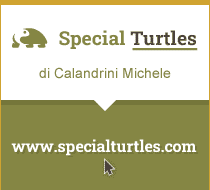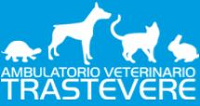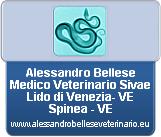C. carbonaria is widespread in South America, from Panama to Northern Argentina and it has been introduced in some Caribbean islands.
Classification
Kingdom: Animalia
Phylum: Chordata
Class: Reptilia
Order: Testudines
Suborder: Cryptodira
Superfamily: Testudinoidea
Genre: Chelonoidis
Species: Chelonoidis carbonaria
Physical features
The carapace of this tortoise is smooth and elongated, black with yellow-orange spots. The average size of an adult carbonaria ranges from 35 to 50 cm ( 13,8 to 15,7 inches ), although some specimens have been found of 50 cm ( 19,7 inches ). It is absent the nuchal scute.
The plastron is mostly yellow-brown with hazelnut color areas. The skin color is dark. On the paws there are some bright red flakes and the head has a color that goes from yellow to orange-red. There is also a variety called Cherry Head, present in Brazil which has a bright red coloration of the head, and a darker and smaller carapace ( max 30 cm - 11,8 inches - ).
Sexual dimorphism
Dimorphism in this species is very obvious:
males are larger and have a violin shape. The plastron is markedly concave. The tail of the male is longer and wider and the cloacal opening is placed further from the base.
Females reach smaller sizes, the plastron is flat, short tail and cloacal opening near the base.
Feeding
C. carbonaria is omnivorous, mostly herbivorous, wild herbs when the weather permits and in winter in the absence of these, they can be replaced with chicory, endive, radicchio, and in moderate amounts Chinese cabbage and stellaria. But in his diet absolutely should not miss a good amount of ripe fruit (pears, apples, apricots, peaches, gooseberries, strawberries, raspberries, melon, figs and bananas) and invertebrates (snails, earthworms, snails, insects). Occasionally you may provide protein in the form of mushrooms and dry food for dogs (a few times a month).
Breeding
This species does not hibernate, it is necessary to make a indoor accommodation during the cold season.
The terrarium should be prepared so that you can maintain a daytime temperature of 32° C ( 89° F )in the hot zone and 23-25° C ( 73-77° ) F in the cool area with a night setback up to 21° C ( 69° F ) for babies and 19/20° C ( 66/68° ) F for adults. The humidity should be high (about 80%). It is useful to keep a wide and low saucer for water. For the bottom you can use normal potting soil with peat moss or coconut fiber mixed with potting soil. We’ll use the UVB neon for 8 hours per day, because if your terrarium is too bright, carbonaria could be annoyed, as it is a native animal of tropical forests. Recommended for heating a ceramic lamp or infrared. The shape of the terrarium is important that it is rectangular with large shelters and food should be given in the cooler area.
When outside temperatures are stabilized at night and do not drop below 19° C ( 66° F ), they can be moved outdoors in very well sheltered from the wind and shaded enclosures.
Mating and reproduction
Sexual maturity in C. carbonaria is reached (captive) at the age of 7-9 years and about 9,8 inches of plastron.
Mating takes place regularly throughout the year: the male moves his head to the right and to the left, attracted by the bright colors of the legs of the female during mating, not aggressive at all. The male will emit guttural sounds.
The female lasts 4-5 depositions per year at intervals of about 30 days with 4-6 eggs at a time.
In the period in which females are close to the deposition it is important to provide cuttlefish bone with calcium and vitamins.
The eggs should be incubated at 29-30,5° C ( 84-86° F ), higher temperatures often cause malformations of the carapace, and sometimes cause the death of the fetus inside the egg. The humidity inside the incubator should not be below 80%. The eggs will hatch after 100-150 days.
Breeding and care of baby specimens
A terrarium for the babies must have the same characteristics as the one of the adults, with particular attention to humidity. Must maintain a high percentage (80%) of humidity throughout the terrarium.
The feeding is the same as for adults, but should supplement with minerals and D3 vitamin.
It is important that the temperature in the warmest area does not exceed 32° C ( 89° F ) and in the cool area between 24 and 26° C ( 75 to 78° F ). Nighttime temperatures should never go below 22° C ( 71° F ). They are very annoyed by too bright lights, so we recommend to avoid the compact bulb for UVB rays and to prefer the traditional fluorescent 5% UVB tubes.
Notes
C. carbonaria is a suitable species for those who want to start to experience with keeping exotic tortoises. We recommend to buy CB specimens, because those ones imported from South America arrive in very bad health conditions, completely dehydrated and often with diseases that can cause death.
Cherry head sub-adult specimen bred in captivity
Differences between young Cherry ( on the left ) and Carbonaria plastrons
Legislation
Chelonoidis carbonaria is included in Appendix II of CITES
************************************************** ***************
Originally written by: Turtlej
Translated by: Ugo
 Benvenuto su Tartarugando, il forum tematico specializzato nell'allevamento di tartarughe e di altri rettili.
Benvenuto su Tartarugando, il forum tematico specializzato nell'allevamento di tartarughe e di altri rettili.






 Elenco delle sezioni
Elenco delle sezioni Elenco delle Categorie
Elenco delle Categorie Nuvola Tag
Nuvola Tag



 Articoli recenti
Articoli recenti